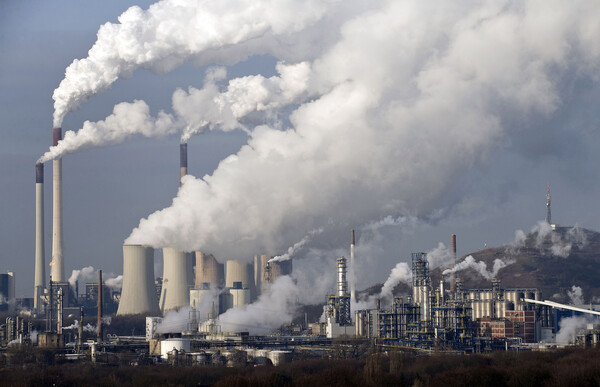S.Korea to cut coal's share of energy usage to under 20% by 2030
The country is aiming for nuclear power to take up a 32% slice of energy usage and new renewables a 21% portion
By Nov 25, 2022 (Gmt+09:00)
LG Chem to sell water filter business to Glenwood PE for $692 million


Kyobo Life poised to buy Japan’s SBI Group-owned savings bank


KT&G eyes overseas M&A after rejecting activist fund's offer


StockX in merger talks with Naver’s online reseller Kream


Mirae Asset to be named Korea Post’s core real estate fund operator



The draft of the Korean government's 10th Basic Plan for Electricity Supply and Demand contains a clause on reducing coal generation's share of nationwide energy usage to below 20% by 2030.
That rate is lower than the figure cited in a working-level plan released in August.
The Ministry of Trade, Industry and Energy said on Thursday the idea is to have nuclear power account for 32.4% of energy use by 2030, liquefied natural gas (LNG) take up 22.9%, renewable energies 21.6% and coal 19.7%. In addition, carbon-free resources like hydrogen and ammonia will comprise 2.1% and all other forms 1.3%.
The figure for nuclear energy is down fourth-tenths of a percentage point from the 32.8% cited in the working-level plan released on Aug. 30 and 1.5 points lower than 21.2% for coal. LNG and new renewable energy, at 20.9% and 21.5%, respectively, however, are forecast to have higher shares under the basic plan. In addition, total maximum power demand was higher in the basic plan than the working-level plan.
The draft plan forecast a peak electricity demand of 109.3 gigawatts in 2030 and 118 GW in 2036, with demand predicted to rise by an average of 1.5% annually from this year through 2036. The working-level plan set maximum demand at 109 GW in 2030 and 117.3 GW in 2036.
The revisions are seen as a response to growing energy demand through LNG and renewable power, whose facilities are relatively easy to expand.
On Nov. 28, the ministry will hold a public hearing on the basic plan, which is rolled out every two years, then report it to the Standing Committee of the National Assembly before gaining final approval.
Write to So-Hyeon Kim at alpha@hankyung.com
-
 PerspectivesKorea should open retail electricity market for renewables
PerspectivesKorea should open retail electricity market for renewablesNov 01, 2022 (Gmt+09:00)
3 Min read -
 EnergyS.Korea to raise nuclear power to one third of energy supply
EnergyS.Korea to raise nuclear power to one third of energy supplyAug 31, 2022 (Gmt+09:00)
1 Min read -

-
 Carbon neutralityKorea’s state electric companies to cease coal power generation by 2050
Carbon neutralityKorea’s state electric companies to cease coal power generation by 2050Nov 11, 2021 (Gmt+09:00)
2 Min read


